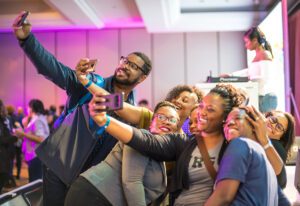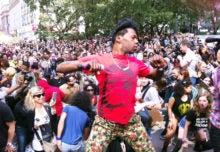“Google wants to organize the world’s information and make it universally accessible—that is the mission of the company—and I think if you follow that sentiment to its logical conclusion, accessibility and making things accessible to all of our users can only happen if we understand what our users need, and that goes for live events, as well.”
–Michelle Rosen Sapir, Group Business Lead, Brand and Reputation Events and Experiences, Google
Fourteen years in the making, Google released its “Inclusive Event Design Guide” last fall to support event professionals in creating in-person, virtual and hybrid programs that are inclusive and accessible for all attendees.
As part of its “All In” toolkit for marketing inclusion, the continuously evolving, U.S.-focused guide was developed in partnership with ADCOLOR, Disability:IN, GLAAD and the Tanenbaum Center for Interreligious Understanding. It offers best practices, recommendations and standards across 21 sections covering topics like attendee list development, badges, music, neurodiversity, signage design, supplier diversity and swag. For instance, “signage should have a non-glare finish and have enough color contrast to be read easily,” or “include best practices about inclusive language in brand ambassador and staff training guides.”
 More Inclusive Strategies:
More Inclusive Strategies:
- How a New Era of Beauty Events is Being Defined by Fans, Not Brands
- Inside the Formula 1 Heineken Silver Las Vegas Grand Prix: Opportunities, Challenges and Brand Buzz
While much of the guide homes in on accessible experience design, there are several inclusion guidelines that reference building community and encouraging diversity of participants, speakers and content to facilitate richer conversations and “contribute to a sense of belonging for attendees who are able to see themselves represented in the audience and on stage.” One way to ensure attendees reflect the diversity of a region is to remove barriers to attendance or reach out to communities and organizations that represent industry professionals and underrepresented groups, the guide suggests.
Michelle Rosen Sapir, group business lead, brand and reputation events and experiences at Google, spearheaded the “Inclusive Event Design Guide” project, along with Melissa Luu, event manager-events and experiences. In addition to her role leading brand and reputation events, Sapir oversees DEI for the events and experiences team and runs a cross-functional Global Inclusive Event Council at Google. She walked us through the new guide’s evolution and development process, as well as highlights from the report and best practices marketers can start to incorporate into their event programs.
Event Marketer: How did these guidelines come about, and what was the process for developing them?
Michelle Rosen Sapir: We put out the very first set of guidelines, which focused on accessibility, in 2009 on our company’s intranet and in a Google Doc, really simply. I was the one who owned the Doc, and we got so many requests to add things or to make it available to others that I ended up making it open source.
In 2019, I set out to create a new set of guidelines—one focused on any guests that would attend our events. The more I started to read through, the more my team realized we don’t know what we don’t know. I reached out to subject matter experts in the disability, accessibility and inclusion fields to ask if they would be a paid consultant. Our partners were amazing and taught us so much, so we really wanted to make something that was organized in a better way. For that, we worked with a designer on our team who came up with the idea of hashtagging things by category and making it searchable. We’ve also translated these to Spanish, alongside our other inclusive marketing guidelines.
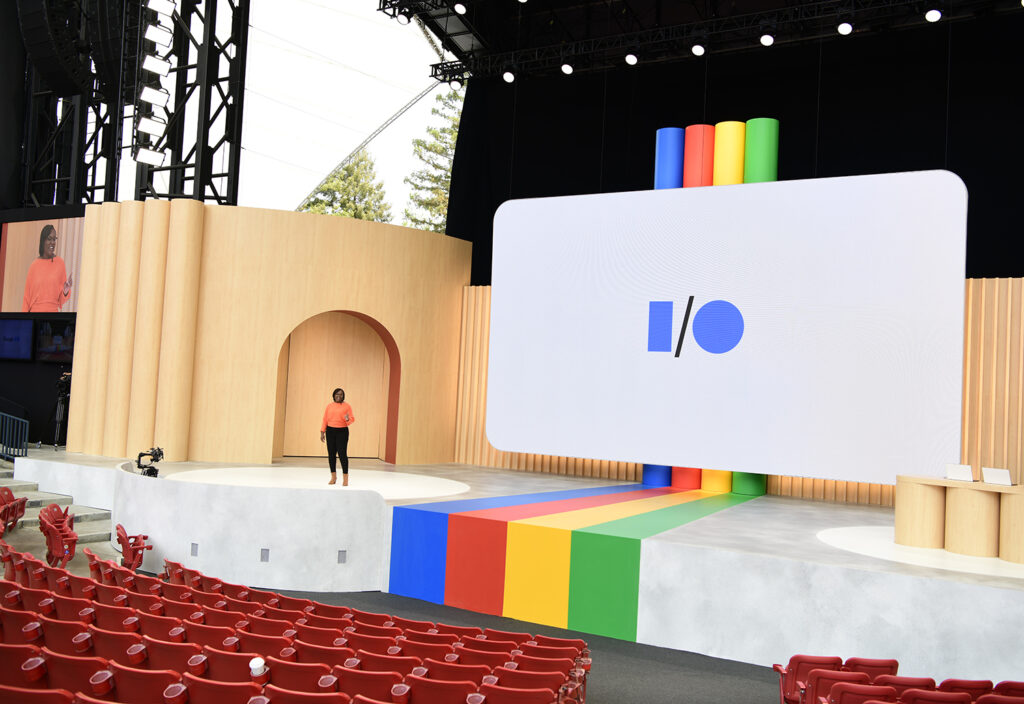
For all of the brand’s events, like the Google I/O conference, an internal “inclusivity champion” reviews the strategy to ensure the event guidelines are being adhered to.
EM: How have you put these guidelines into practice on your team and in Google’s events?
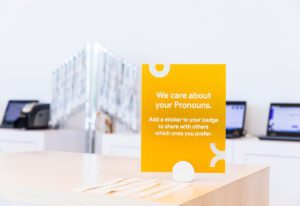
The guidelines cover gender-inclusive practices, like giving attendees the option to provide their preferred pronouns.
MRS: We started with a virtual set of guidelines during the pandemic in April 2021, and then it evolved to IRL in 2023. We were able to update them, and there are a lot of levels of approval that they have to go through before they’re released. All of our event managers have access to them and are encouraged to utilize them. We also have an internal program called the inclusivity champion. On every single one of our projects, there is a person who is responsible for ensuring that these guidelines are adhered to at the event, so we’re making sure that we’re not just talking the talk but we’re walking the walk. And then recently, I’ve started to, when possible, speak to attendees after the events, one on one, to get their feedback and have a conversation about how they experienced it. We’ve learned a lot that way.
Google wants to organize the world’s information and make it universally accessible—that is the mission of the company—and I think if you follow that sentiment to its logical conclusion, accessibility and making things accessible to all of our users can only happen if we understand what our users need, and that goes for live events, as well. They won’t be able to participate in the event or understand the announcements or the launches from the company if they don’t feel a sense of belonging and that the event was created with them in mind.
We trained our agency partners on it. We had days of training with them, where they heard from internal leaders at Google and we reviewed the guidelines with them. And we even went so far as to add language into our scope of work contracts that holds them responsible for reading these guidelines and for utilizing them to the best of their ability for a given event that they’re on because our agency partners make so many decisions on our behalf. Many of them have told us that it has impacted the way that they make decisions for other clients, and that was really our hope. If we could help impact positive change, then this work is so worthwhile.
EM: What are your top three points from the report that are particularly important to know?
MRS: I think that captions need to be standard practice, and ASL interpreters are an added bonus. When you put on AI-generated captions, they’re right about 70 percent of the time, and when you think about it, it’s not acceptable that somebody who’s deaf or hard of hearing would only be able to understand 70 percent of what you’re saying.
Private spaces for nursing moms are another top thing to provide. Dietary restrictions, I think a lot of people assume that it’s par for the course, but you would be amazed how many times it is not. Because food is such a great unifier, the opposite is true. It also can be exclusionary and make people feel like they can’t sit at a table and have an important conversation or develop a relationship.
And all of this really starts with setting out on your planning with a different mindset, like the way that you do registration. At Google, we have a new way of doing this where we specifically ask about accessibility accommodations and dietary restrictions. It’s only really when you understand your users, your guests, that you can build an experience that helps and caters to them. We know that not every event has a huge budget, but there are small things that can be done that are helpful, and some of those tips are in the guidelines, as well.
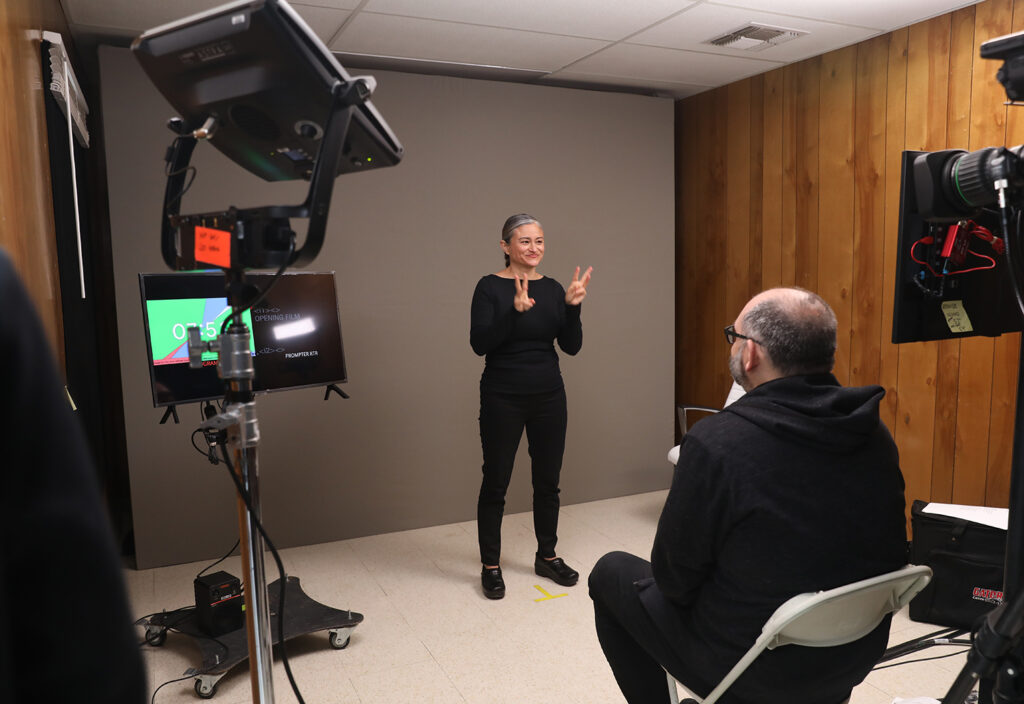
Google leverages real-life ASL interpreters, rather than AI, to ensure attendees who are deaf or hard of hearing are getting the full picture.
EM: Where do these guidelines fit in the planning process?
MRS: More than being part of the planning process, I think it needs to be part of the professional development process, like trainings for event professionals. Not when they’re in the midst of an event because we all know how that feels—it’s intense, it’s a lot—but having it be something that you’re familiar with beforehand. And leaning on colleagues, agencies and vendors, not to be shy about sharing and saying to your caterer, ‘Hey, could you read the section on X, Y or Z? I really want you to know it also.’ We all have a collective responsibility. An event professional should see themselves as the conduit, not as the sole responsible party.
EM: When it comes to inclusivity and accessibility in events, where do you think the industry as a whole stands?
MRS: In the world of live experiences, I think we have a long way to go, and that’s largely because of the diversity of events and types of live experiences. A live experience could be a sporting event or a b-to-b conference, which are two totally different animals. I do think that we’re still in some of the more nascent stages of awareness and making this part of a regular bar, so in the way that name tags are standard, so to should inclusivity and accessibility be part of the conversation. We really want to help raise awareness and make these guidelines accessible and easy to use so that an event professional doesn’t feel like it’s onerous or that it’s going to add so many more hours to their work; it should be viewed as able to be integrated.
Photos: Courtesy of Google



